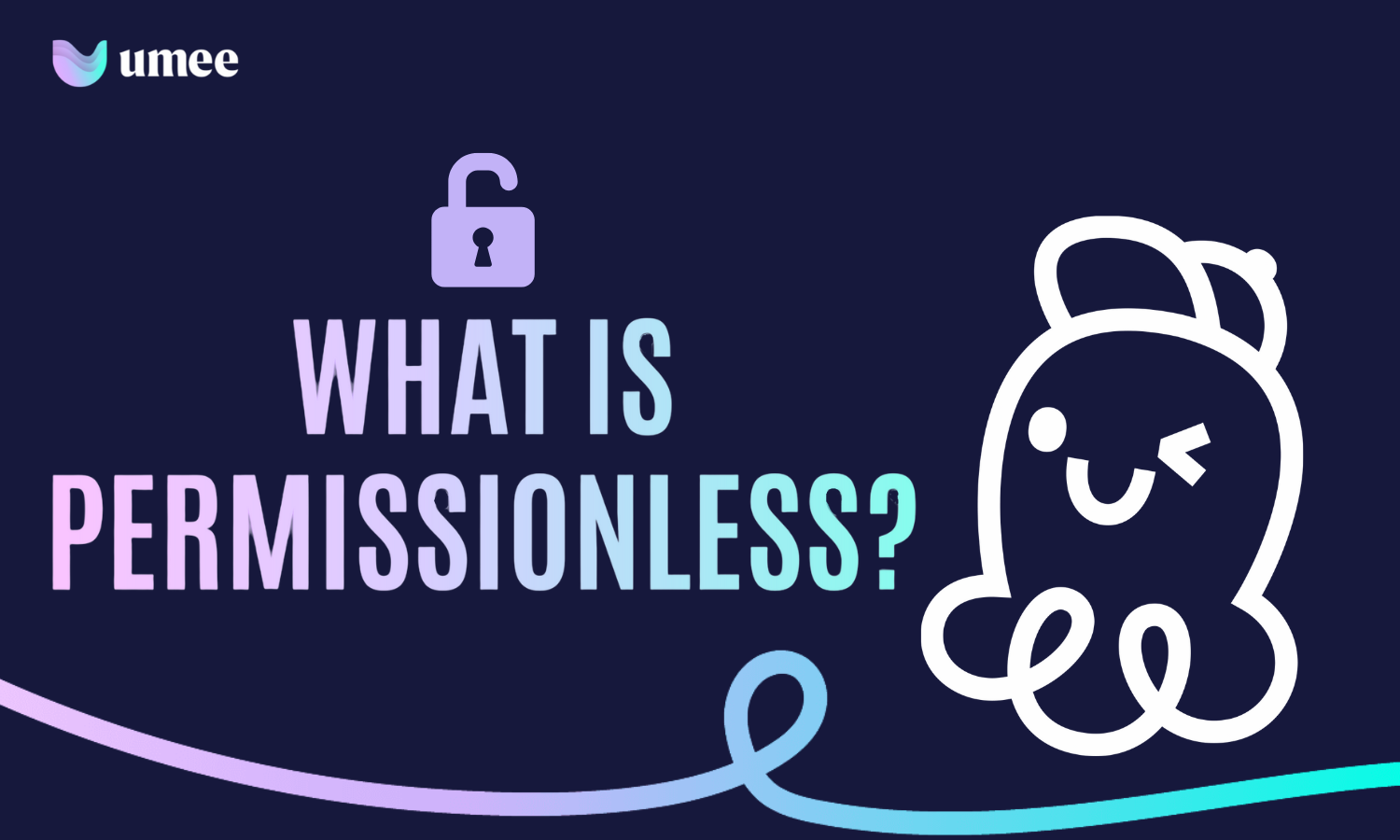What Does “Permissionless” Mean in DeFi?

TLDR;
If you follow the market for digital assets, you may have heard of DeFi by now. DeFi, which stands for "decentralized finance," is a new financial technology that is based on distributed ledgers and lets users get rid of many of the middlemen involved in traditional financial services.
You may have also heard of "permissioned DeFi." This is a newer idea that gives financial institutions more security and clearer rules.
But what is permissioned DeFi, and how is it different from the usual definition of DeFi? There are several important differences between the two, so it's important to know what they are and how they might affect your long-term strategy.
Let's talk about what these two models have in common and what makes them different, so you can join the Cosmos DeFi space with the knowledge you need to make the most money safely and efficiently.
Permissionless
When you use a DeFi app, you don't have to sign up with your email and name, you don't need an ID, and most of the time, your location doesn't matter (and when it matters you can still access the permissionless backend by bypassing the front end interface). All you have to do is click a few buttons.
You can enter or leave (deposit or withdraw your money) at any time, like a roundabout, unless there are hard-coded programs that work like farming and require a lockup to earn rewards.
The point is that in Cosmos DeFi or blockchain, we no longer have to give out the same personal information like your name, email, and ID just to get into a bank account or cryptocurrency exchange. All you need is a wallet that works with the service and the guts to click "Connect."
As a warning, old crypto companies, like exchanges, will use the term "DeFi" in their new products. If you have to put your assets into an exchange that takes control of them, it's not permissionless and therefore not DeFi.
Also Read: DeFi in Cosmos Ecosystem.
So the most important thing to remember is that permissionlessness isn't just a part of DeFi, it's what makes an app DeFi. As long as you have a wallet that works with DeFi, you can come and go as you please. If you can tell the difference between what needs permission and what doesn't, you might be able to avoid bad actors as DeFi grows in the coming years.
DeFi can be used by anyone with an internet connection, and no one in charge needs to give permission. DeFi's ultimate goal is to eliminate third parties and outdated approval systems from financial transactions.
Also Read: Important DeFi Glossaries
Permissioned
Traditional centralized financial services are built on "paper promises," which are financial contracts between two parties. This makes it harder for people to get into the market and makes it hard for developers to make fully automated or fair financial apps because access could be taken away at any time. The central entity now has control over important parts of the app, which makes it hard for the third-party developer to give deterministic guarantees.
DeFi flips this situation on its head because it doesn't need permission to work. This creates an open foundation from which any developer can get instant access to financial infrastructure that is hard to change and works well. This makes it possible to make truly fair and deterministic applications that run exactly as written and can't be turned off. Plugging into DeFi infrastructure doesn't need permission from the original developers, which makes it easy to try new things without a central bottleneck.
Also Read: What is leverage in DeFi?
Conclusion
DeFi makes it very easy for investors from all over the world to lend and borrow money. DeFi's growth has changed the global financial ecosystem with its unique financial tools. Permissionless lending protocols such as Umee have paved the way for the future by giving investors different ways to use their money. This has given more financial freedom to the general public.
Learn crypto basics from Umeeversity.
